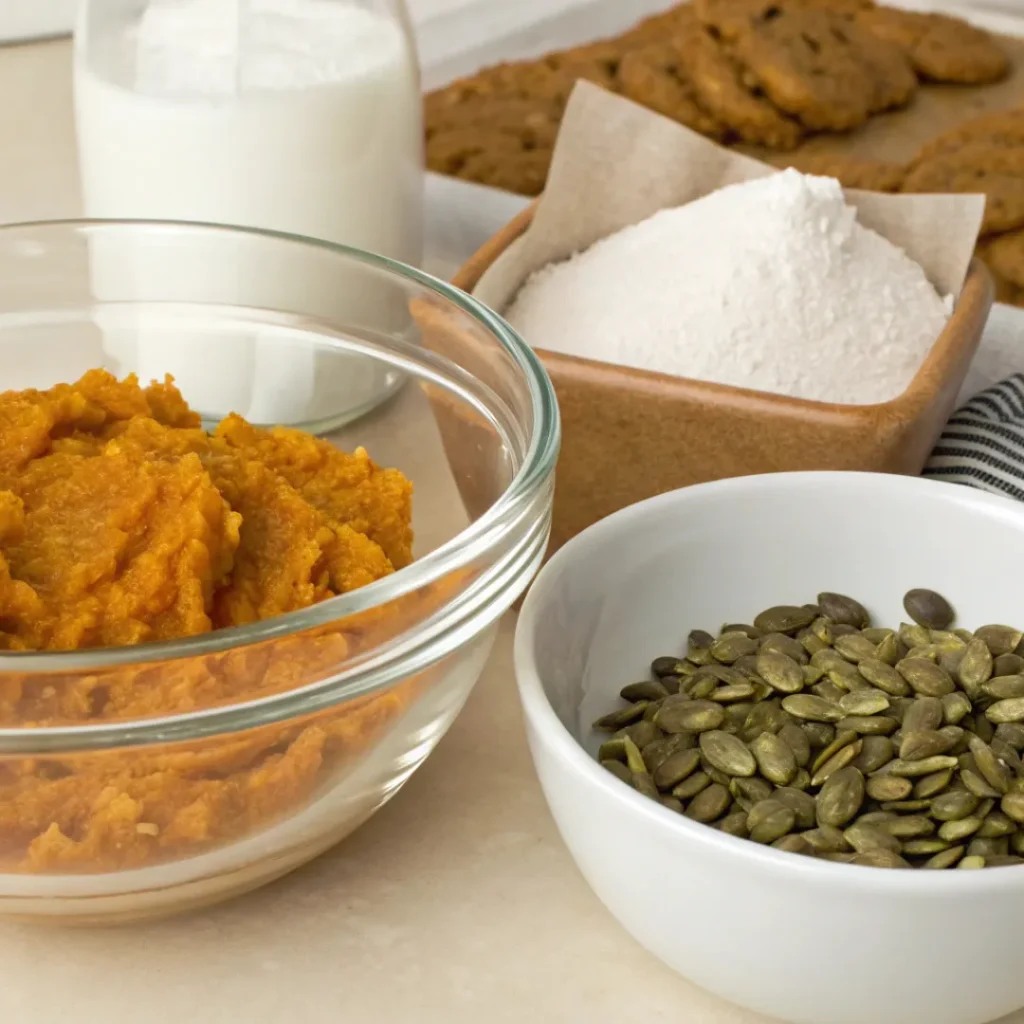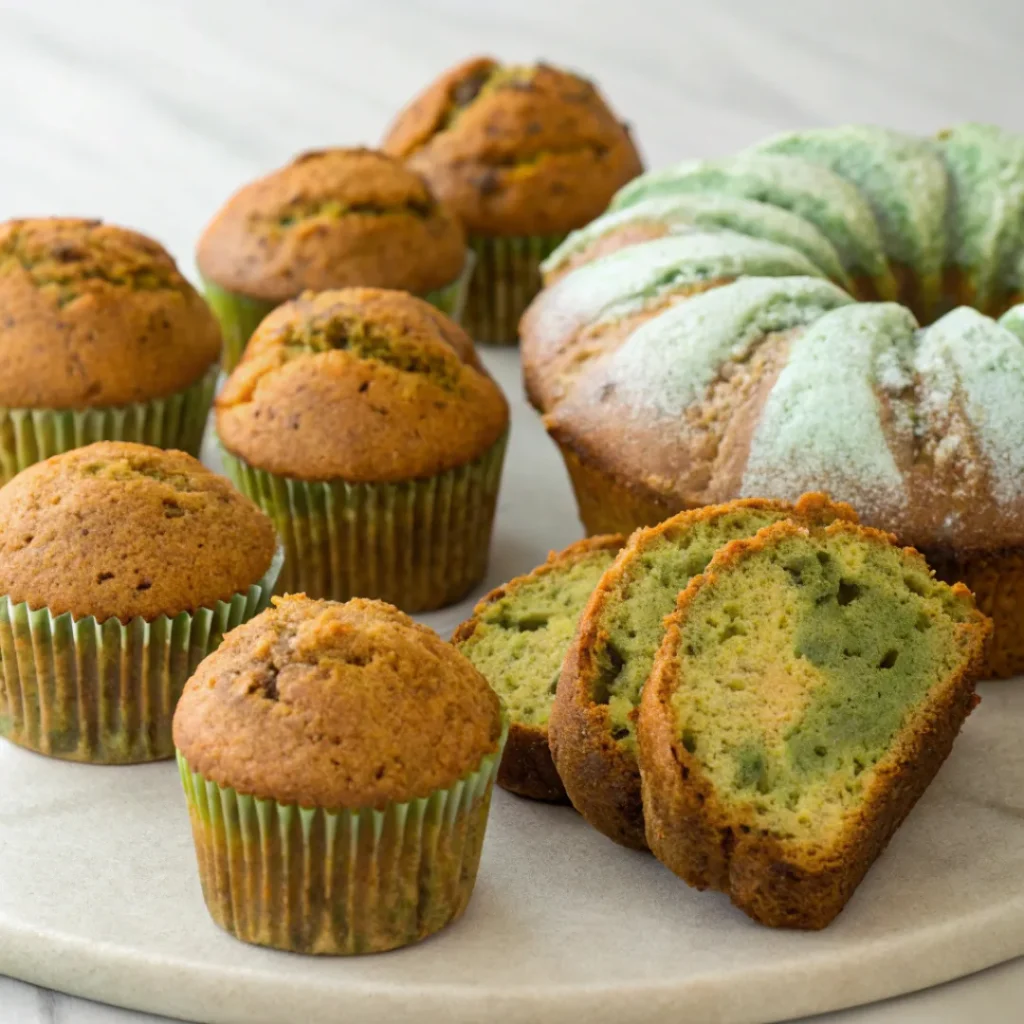Baking is both an art and a science. While the creative aspect allows for personal expression, the scientific side can sometimes lead to unexpected results. One such surprise often leaves bakers asking, “Why did my pumpkin cookies turn green?” The mysterious transformation from a warm orange to an alarming green can be puzzling. Understanding why this happens is crucial for both novice and experienced bakers. The green color doesn’t just appear out of nowhere; it is the result of specific chemical reactions between the ingredients. This article aims to shed light on why your pumpkin cookies turned green and how you can prevent it from happening in the future.
The Chemistry of Baking
Baking involves a delicate balance of ingredients, all of which play specific roles in creating the perfect cookie. When you mix flour, sugar, eggs, and other ingredients, a series of chemical reactions occur. These reactions are influenced by temperature, acidity, and the combination of ingredients. For example, baking soda (sodium bicarbonate) is a common leavening agent in cookie recipes. It reacts with acidic ingredients like pumpkin puree to produce carbon dioxide gas, which helps the cookies rise. However, this same reaction can also lead to unintended consequences, such as a change in color. Learn more about why food colors change during baking and other cooking processes.
Why Do Pumpkin Cookies Turn Green?
The greening of pumpkin cookies is primarily due to the chemical reaction between baking soda and certain components in the pumpkin or spices used in the recipe. Let’s explore the key factors in more detail.

The Role of Baking Soda and Baking Powder
Baking soda and baking powder are both leavening agents, but they function differently. Baking soda requires an acidic ingredient to activate, while baking powder already contains an acid (usually cream of tartar) and only needs moisture and heat to work. When there is too much baking soda in the recipe or when it’s not properly balanced with an acidic ingredient, the resulting reaction can cause the cookies to turn green.
Interaction with Pumpkin and Spices
Pumpkin puree contains natural acids, but when combined with baking soda, the balance of acidity can shift, especially if there is an excess of baking soda. Additionally, some spices, such as cinnamon and nutmeg, can interact with baking soda in a way that enhances the green color. This reaction is more likely to occur if the cookies are left to cool for a long time before being eaten, as the green color tends to intensify over time.
Common Ingredients That Cause Green Discoloration
Besides the main players like baking soda and pumpkin puree, other ingredients can contribute to the green hue in your pumpkin cookies.

Sunflower Seeds and Other Nuts
Sunflower seeds, often used in baking for added crunch, contain chlorogenic acid. When baked with an alkaline substance like baking soda, chlorogenic acid can cause a green or blue-green color to develop. This reaction is not harmful, but it can be surprising if you’re not expecting it. Other nuts or seeds with similar properties can also contribute to discoloration.
Baking Soda’s Reaction with Pumpkin Puree
As mentioned earlier, the acidity of pumpkin puree combined with the alkaline nature of baking soda can result in an unintended green hue. The amount of baking soda and how it is mixed into the batter can significantly affect whether your cookies turn green or not. Properly measuring and mixing these ingredients is key to preventing discoloration.
How to Prevent Pumpkin Cookies from Turning Green
Preventing your pumpkin cookies from turning green involves careful attention to ingredient proportions and mixing techniques.
Adjusting Baking Soda and Baking Powder Levels
One of the simplest ways to prevent green cookies is to adjust the levels of baking soda and baking powder in your recipe. If you are experimenting with different ingredients, such as using pumpkin puree as a healthier alternative to butter, you may need to tweak the leavening agents to maintain the right balance. To learn more about using pumpkin puree instead of butter, this article provides useful insights.
The Importance of Proper Mixing
Ensuring that your ingredients are thoroughly mixed is another crucial step. Uneven distribution of baking soda in the batter can lead to pockets of green where the chemical reaction is more concentrated. Take extra time to mix your dough well, ensuring that all ingredients are evenly incorporated.
The Science Behind the Green Hue
The unexpected green color in your pumpkin cookies is a result of specific chemical reactions. Just as ingredients can alter the color of baked goods, they can also create surprising and delightful flavor combinations. For those interested in experimenting with flavors, you might enjoy learning about how lemon and blueberry taste together, a pairing that’s both zesty and sweet.
Chlorogenic Acid and Its Role in Baking
Chlorogenic acid is found in coffee, fruits, and vegetables, including pumpkin. When this acid interacts with the alkaline environment created by baking soda, it can form a pigment known as quinone, which has a greenish hue. This reaction is temperature-dependent, meaning it is more likely to occur during baking or as the cookies cool.
How Acidity Affects Cookie Color
The pH level of your cookie dough can significantly impact the final color of your cookies. A more acidic dough (lower pH) is less likely to turn green, while a more alkaline dough (higher pH) increases the risk. Balancing the acidity in your dough by using ingredients like brown sugar or molasses, which are naturally acidic, can help prevent the green color from developing.
Is It Safe to Eat Green Pumpkin Cookies?
The sight of green pumpkin cookies might make you hesitate, but is it actually safe to eat them?
Food Safety Considerations
The good news is that green pumpkin cookies are safe to eat. The color change is purely cosmetic and does not indicate spoilage or harmful substances. The reaction that causes the green color does not affect the safety of the cookies, so you can enjoy them without worry.
Taste and Texture Impact
While the green color might be off-putting, it typically does not affect the taste or texture of the cookies. If anything, the flavor should remain consistent with what you would expect from a well-baked pumpkin cookie. However, if the green hue bothers you, consider using the tips provided earlier to adjust your recipe.
Other Baked Goods That Can Turn Green
Similar to pumpkin cookies, other baked goods can undergo unexpected color changes. For instance, using frozen fruits like blueberries in cakes can result in blue or purple hues due to the way the fruit interacts with the batter. If you’re interested in learning more about this and how to prevent it, check out this article on using frozen blueberries in cakes.

Muffins, Cakes, and Bread
Similar to pumpkin cookies, pumpkin muffins, cakes, and bread can also turn green due to the same chemical reactions. The presence of baking soda and chlorogenic acid in these baked goods can cause them to change color, especially if the batter is left to sit before baking or if the baked goods are stored for a long time.
Troubleshooting Other Pumpkin Cookie Issues
While the green color might be the most surprising issue, pumpkin cookies can present other challenges as well, such as flat or crumbly textures. If you’re looking to take a break from pumpkin and try something different, consider baking a lemon blueberry cake, which offers a perfect balance of tart and sweet flavors, along with a vibrant color that’s sure to impress.
Flat Cookies
If your pumpkin cookies turn out flat, it could be due to the butter or sugar content. Too much sugar or melted butter can cause the cookies to spread too much during baking. To prevent this, try chilling your dough before baking or adjusting the ratio of dry to wet ingredients.
Dry or Crumbly Cookies
Dry or crumbly pumpkin cookies are often the result of overbaking or too much flour. Ensure you measure your flour correctly and keep an eye on the baking time. Removing the cookies from the oven just as they begin to set can help retain their moisture and softness.
Creative Ways to Embrace Green Pumpkin Cookies
If your pumpkin cookies have turned green, don’t panic! Instead, embrace the unexpected color and turn it into a creative baking opportunity. You might even want to experiment with other pumpkin cookie recipes, like these delicious pumpkin chocolate chip cookies, which add a delightful twist to the classic treat.
Turning a Baking Mishap into a Fun Halloween Treat
Green cookies are perfect for Halloween! You can decorate them with spooky designs, such as icing shaped like spider webs, or add candy eyes to create monster cookies. The green hue will add an eerie and festive touch to your Halloween table.
Decorating Ideas for Green Cookies
Beyond Halloween, green cookies can be a fun treat for St. Patrick’s Day or even a unique addition to a spring-themed party. Consider using white or pastel-colored icing to create contrast, and add edible glitter or sprinkles to make them even more eye-catching.
Frequently Asked Questions
Yes, reducing the amount of baking soda or replacing some of it with baking powder can help prevent your cookies from turning green. Just be sure to maintain enough leavening to ensure your cookies rise properly.
Do all pumpkin recipes cause green discoloration?
Not all pumpkin recipes will result in green cookies. The likelihood depends on the balance of ingredients, especially the amount of baking soda and the presence of chlorogenic acid in the pumpkin puree.
How can I neutralize the green color?
Adding more acidic ingredients, like lemon juice or cream of tartar, can help neutralize the alkalinity in the dough, reducing the chances of a green color developing.
Are there other vegetables that cause similar reactions?
Yes, other vegetables, like zucchini and sunflower seeds, can cause similar color changes in baked goods when they interact with alkaline ingredients like baking soda.
What other unexpected colors can appear in baked goods?
Baked goods can turn a variety of unexpected colors due to chemical reactions, such as purple or blue when baking with blueberries or black beans, or red when using beets.
Conclusion
Understanding why your pumpkin cookies turned green involves a blend of science and baking know-how. The interaction between baking soda and ingredients like pumpkin puree or sunflower seeds is the primary cause of this unexpected color change. While it may be surprising, the green hue is harmless and does not affect the taste or safety of your cookies. With the tips provided in this article, you can prevent green pumpkin cookies in the future or even embrace them as a creative twist on a classic treat.

